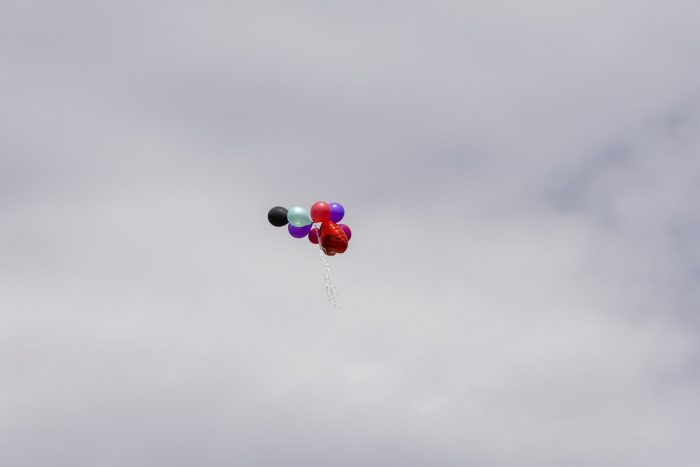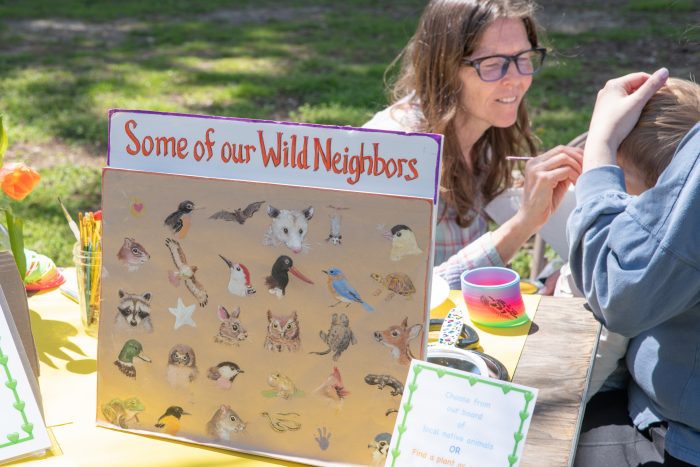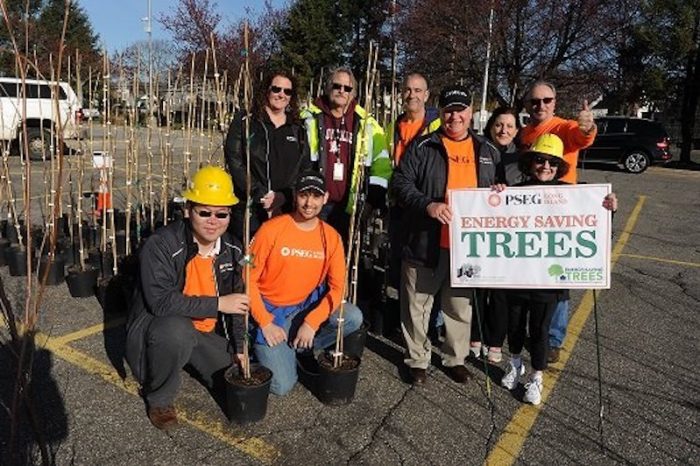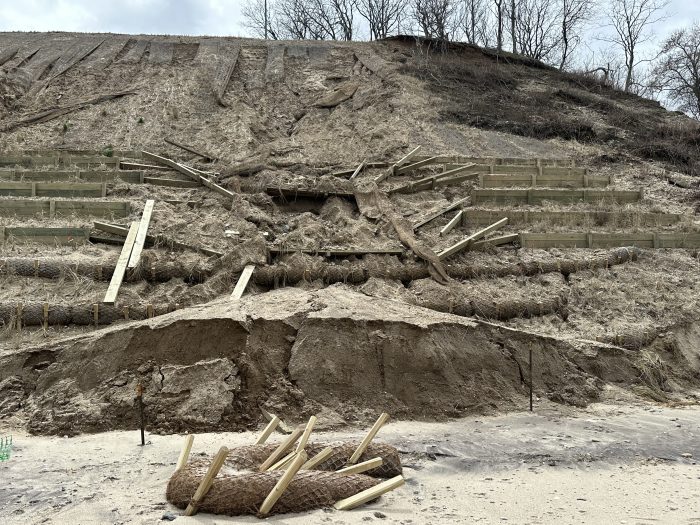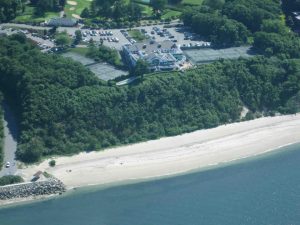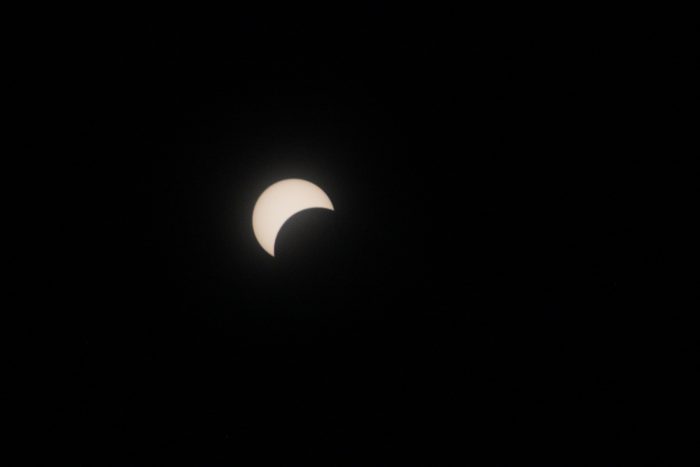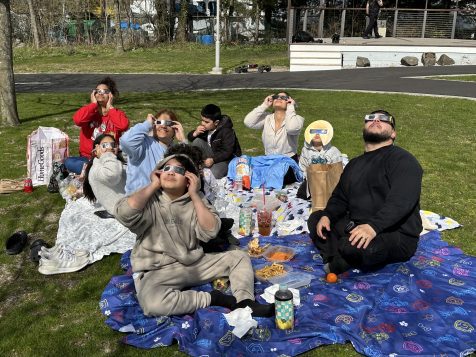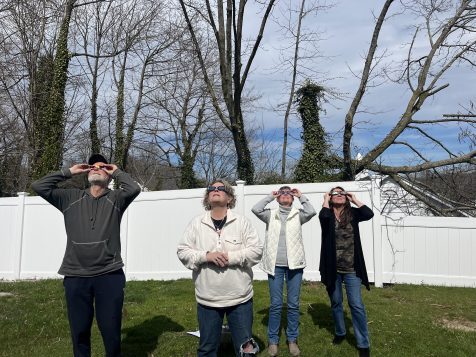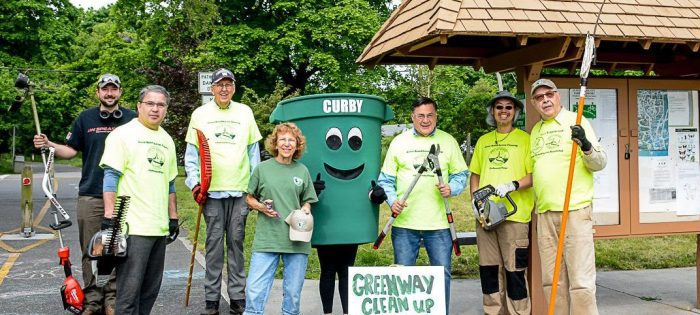By John L. Turner

Oh those lighter-than-air balloons! As the helium gas inside seeps away, causing them to lose their buoyancy, they come back to earth and their deflated outlines appear everywhere — in natural places such as fields, forests, and the island’s wave-lapped shorelines — and human constructed landscapes like dangling from utility lines, even the support wires of traffic lights. Sometimes they’re single balloons tethered with nylon string, other times they’re in bunches — a half dozen or more tied together. Some find their way to the ground while more entangle themselves amidst tree branches.
While most have generic messages, like the “Happy Birthday Princess” balloon I recently found in a hike in the Pine Barrens with 30 6th grade students, if they have a message at all, in a few cases I’ve been able to tell the original purpose of the balloon purchase: a Happy 40th Birthday to Beth! exclaimed one mylar balloon, dangling from a young understory oak tree while another mylar balloon announced “Todd’s 3rd Birthday” with a triangular cake wedge adorned with three candles. As these examples illustrate, buoyant balloons have become a common, unwelcome, and unfortunate, presence in the environment.
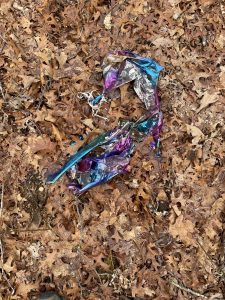
The ubiquitous presence of balloons in the environment has real consequences beyond forming unsightly litter, and these effects are felt most acutely by marine animals — sea turtles, cetaceans (whales and dolphins), and a wide variety of seabirds. Websites, both governmental ones such as the National Ocean and Atmospheric Administration (NOAA) and conservation organizations like Ocean Conservancy, contain countless photos of dead sea turtles and stranded whales and dolphins, all having perished from ingesting balloons, mistaking them for food.
This deceit is especially telling for leatherback sea turtles for which jellyfish comprise a significant part of their diet. Compare photos of a deflated balloon floating on the ocean’s surface with a jellyfish and it’s easy to see why a sea turtle might easily mistake a balloon for an easy-to-capture meal. Well, mistake them they all too often do, with fatal results, when the balloon lodges in their digestive tract. The same results often occur with larger mammals.
With marine birds entanglement, not ingestion, is the main cause of death. Tassels of long string which ties balloons together are often made of nylon or other material which is slow to degrade, easily wrapping around a seabird’s wings, neck, feet, or bill as it floats on the water.
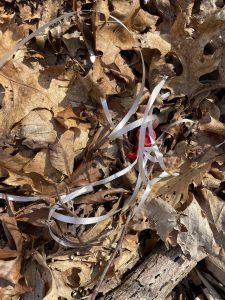
There are two basic types of lighter-than-air balloons — latex and mylar. Both pose risks to wildlife: in the case of latex, a threat for many years, and for mylar many decades. Not surprisingly, balloon manufacturers have long claimed that balloon releases pose no risk to wildlife and the environment, and that latex balloons, especially, are biodegradable. This is a fact not borne out both by objective experiments and numerous observations. In fact, the biodegradable claims are largely an example of greenwashing (when a company presents a more environmentally favorable view of its activities than is warranted).
A 1989 balloon industry study contended that most balloons pose no risk since they rise in the atmosphere to the point they burst due to low air pressure, creating “harmless” pieces of rubber, and those that don’t burst are so few as to be dispersed in a density of about one balloon per every 15 square miles (about a four mile square). From my anecdotal experience hiking and traveling around Long Island, the density of balloon landings is significantly greater than that, more like several balloons per square mile, an observational density borne out by coastal clean-ups.
For example, according to a press account in a local paper, “the Eastern Long Island Chapter of the Surfrider Organization collected 774 balloons on 38 beaches from June 2017 to December 2018.” Further, a New York Sea Grant newsletter indicated that in 2016 coastal clean-ups in the mid-Atlantic states produced 8,400 balloons and balloon fragments.
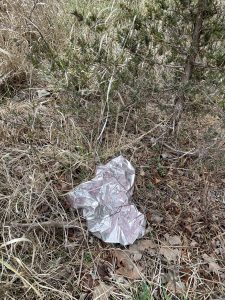
According to NOAA’s website: “In 2014, 236 volunteers found over 900 balloons in the Chincoteague National Wildlife Refuge in Virginia in a three-hour period. Recent surveys of remote islands on Virginia’s Eastern Shore documented up to 40 balloons per mile of beach.” Closer to home, a 2018 clean-up involving 33 volunteers at Jones Beach alone picked up 308 balloons or pieces of balloons.
A colleague, Pete Osswald, to whom I was recently chatting with about the problem balloons pose to wildlife, sent me a comment which is especially illustrative of the problem: “I have been navigating the waters around Long Island both inshore and offshore for over 50 years as a fisherman and Seatown boat captain. I have seen many things both wondrous and appalling. One of the intolerable sights that bothers me the most is the abundance of balloons I see floating in the water on a daily basis. I had hopes for the problem being remedied a few decades back when there was an apparent push for educating the public about the dangers to marine life from releasing balloons. Unfortunately the defiling has become worse There are slick calm days out on the ocean where I see scores of downed launched balloons floating like foreboding headstones of the unwitting turtles and marine mammals that consume them.”
All these observations and findings suggest a density a bit greater than one balloon every four square miles, don’t you think?
Lawmakers have responded to the issue. Many municipalities throughout the country have enacted bans on the intentional release of balloons as have several Long Island municipalities. To its credit, the Suffolk County Legislature in September 2019 passed a law sponsored by then Legislator Sarah Anker banning the release of lighter-than-air balloons and requiring businesses which sell these items to post a statement indicating that intentional release of balloons is prohibited in the County; the County Executive soon signed it into law and it became a revised Chapter 310 of the Suffolk County Code.
Several states have enacted release bans with Florida poised to become the next. Legislation has been introduced in New York State over the past several sessions but, to date, there’s been no action on the bills.
Another problem with lighter-than-air balloons, especially mylar balloons which have a metallic coating, is contact with high voltage power lines. Contact can cause an explosion often shorting out electrical power. If you type in “Balloons Exploding on Powerlines” in the search box of the YouTube website you can see videos of such events.
Some organizations think “release bans” don’t go far enough as it is impossible to monitor such behavior; rather supporting a prohibition on the sale of lighter-than-air balloons, understandably believing a ban on purchase is a much more effective strategy than banning their release.
Many environmentally benign alternatives exist to replace balloons during special events. The “Balloon Blows” website lists the following options: streamers, kites, pinwheels, garden spinners, flags, ribbon dancers, bubble blowers, and inflatable, weighed-down characters.
There is an old Greek adage, paraphrased here: “Never attribute to malice that which is adequately explained by stupidity.” While there are no shortage of malevolent acts intended to kill wildlife — the sickening, still legal use of leghold traps for trapping foxes, muskrats, skunks, and weasels on Long Island, comes to mind — the “stupidity” involved, to soften it a bit, is more often the purview of ignorance or thoughtlessness.
The logical inference of this is if people knew the consequence of their thoughtless acts would be to cause animal suffering and death, they would not have acted this way in the first place. This perspective gives great credence to the phrase as it relates to lighter-than-air balloons —“Say no to letting it go.” Better yet, in recognition of the countless wildlife species that make up the living fabric of our oceans, let’s commit on this Earth Day, to not buying lighter-than-air balloons.
A resident of Setauket, author John L. Turner is conservation chair of the Four Harbors Audubon Society, author of “Exploring the Other Island: A Seasonal Nature Guide to Long Island” and president of Alula Birding & Natural History Tours.

